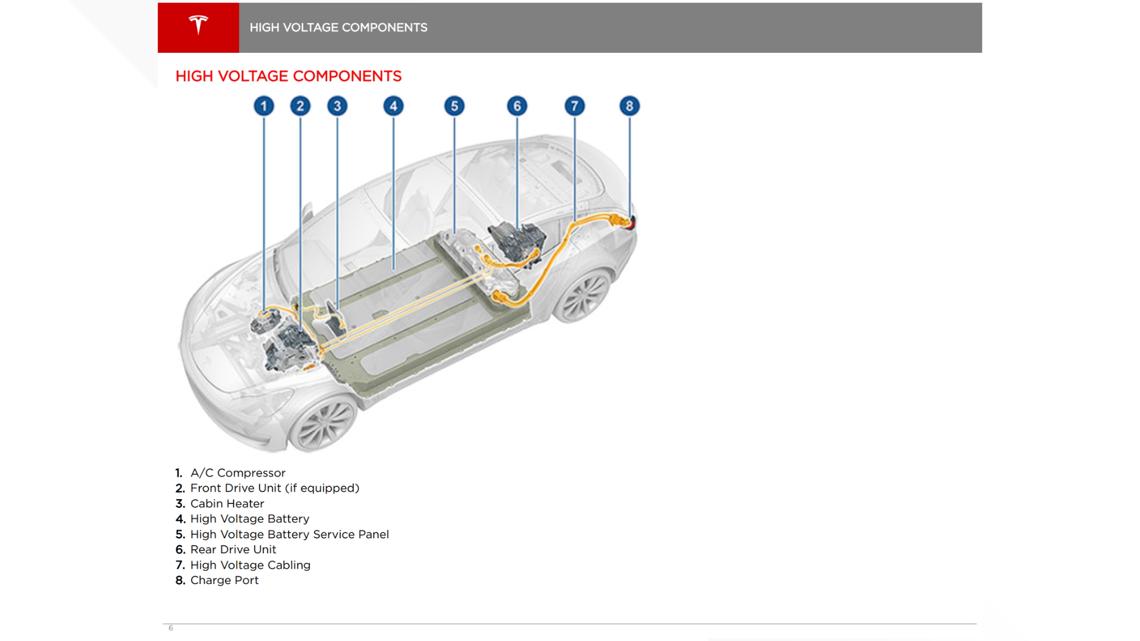More than 19,000 vehicle crashes are reported to police every day in the United States. As electric vehicles become more popular, it’s more likely these types of cars will be involved in a crash.
Firefighters sometimes use hydraulic rescue tools, like the Jaws of Life, to quickly extricate accident victims after a crash. The Jaws of Life can cut through a vehicle’s body, doors or roof to free people trapped inside a crashed car.
However, multiple social media posts claim emergency responders cannot use the Jaws of Life on electric vehicles due to the risk of electrocution.
Several VERIFY readers reached out to us to ask if that’s true.
THE QUESTION
Can emergency responders use the Jaws of Life on electric vehicles?
THE SOURCES
- National Fire Protection Association (NFPA)
- Safe Electricity, a public awareness program of the Energy Education Council
- Dan Fish, technical specialist at EV FireSafe, a research project that provides free electric vehicle fire safety knowledge for emergency responders
- Michael O’Brian, fire chief for the Brighton Area Fire Authority in Brighton, Michigan, and director of the Fire and Life Safety Section at the International Association of Fire Chiefs
- Micheal Smyth, director of education at AFV Educate, a not-for-profit organization that develops and presents training on alternative fuel vehicles to emergency responders and automotive technicians
THE ANSWER
Yes, emergency responders can use the Jaws of Life on electric vehicles.
WHAT WE FOUND
Emergency responders can safely use hydraulic rescue tools, like the Jaws of Life, on electric vehicles without electrocuting themselves or the passengers inside the car, according to our sources.
“It is entirely possible to use extrication tools on electric, hybrid electric, plug-in hybrid electric [and] hydrogen vehicles,” Micheal Smyth, director of education at AFV Educate, told VERIFY.
Safe Electricity, a public awareness program of the Energy Education Council, says before using the Jaws of Life or any other brand of cutters on electric vehicles, emergency responders should first verify they are not cutting a high-voltage cable or an energized wire loom, which is a collection of electrical cables or wires that transmit signals or electrical power.
“Years ago, earlier electric vehicle model designs placed wire looms in the interior of vehicles; newer models typically house them externally,” Safe Electricity said. This design change was implemented so that high-voltage cables found on newer model electric vehicles are easier to avoid by emergency responders.
“The manufacturers, one of the things they've done really well for us is to say, ‘don't cut the orange cables,’” said Brighton Area Fire Authority Fire Chief Michael O’Brian.
Since EV designs vary, Safe Electricity says first responders typically review emergency response guides published by car manufacturers or other safety apps for the specific EV model when responding to a crash. Emergency response guides outline specific areas within electric vehicles deemed safe for firefighters to use extrication tools like the Jaws of Life.


Dan Fish, technical specialist at EV FireSafe, explains that electric vehicle systems typically run in three parts: the low-voltage system that controls the electric doors, electric seats, radio, etc.; the high-voltage system that makes up the battery pack(s), the electrical components, such as the motors, DC-to-DC converter and the high-voltage wiring; and the third system, which “can be AC power from the vehicle being connected to an EV charger,” that he says “should be switched off before engaging in any rescue operations, as this is where the risk of electrocution is.”
The U.S. Fire Administration and some electric vehicle manufacturers warn that there is a risk of electric shock if a firefighter uses extrication tools like the Jaws of Life to cut open a crashed vehicle in the wrong place. However, Fish says there is no record of this happening in the U.S. or worldwide.
“We are not aware of any emergency responder globally that has suffered an electric shock injury or been electrocuted from performing any rescue operation or otherwise on an EV,” Fish said.
Smyth and O’Brian both said the same.
“To the best of our knowledge, there have not been any incidents with firefighters receiving electric shocks where there would be bodily injury,” Smyth said.
“I do believe the manufacturers have done a really good job of isolating that power, providing various safety mechanisms within the battery packs, to limit that,” O’Brian said.


In addition to emergency response guides, Fish says there is also hands-on training available for fire departments so they can learn how to rescue accident victims from electric vehicles safely.
“For an emergency responder to use the Jaws of Life, in any vehicle — petrol, diesel, hydrogen, or electric — it is important that the operator is trained,” Fish said.
Safe Electricity says while it is true that emergency responders must take extra precautions when responding to an accident involving electric vehicles, they must also take care when using cutters on any type of vehicle, “as they would not want to cut certain covered items like supplemental restraints (airbags) and other hidden components/wires that could cause harm when cut.”
That’s why Fish and Safe Electricity both say emergency responders must use a “peel-and-peek” approach before using tools like the Jaws of Life on both electric and internal combustion engine vehicles.
“This is looking to identify things such as the EV high voltage cables, but also undeployed airbag cylinders, struts that hold up frunks and trunks, seatbelt pretensioners, fuel lines, air conditioning lines — all of these can be extremely hazardous to both the first responders on scene, but also for the person that is being rescued from the vehicle,” Fish explained.
The National Fire Protection Association (NFPA) maintains a collection of emergency response guides from more than 35 electric vehicle manufacturers on its website. The guides are free to download.

